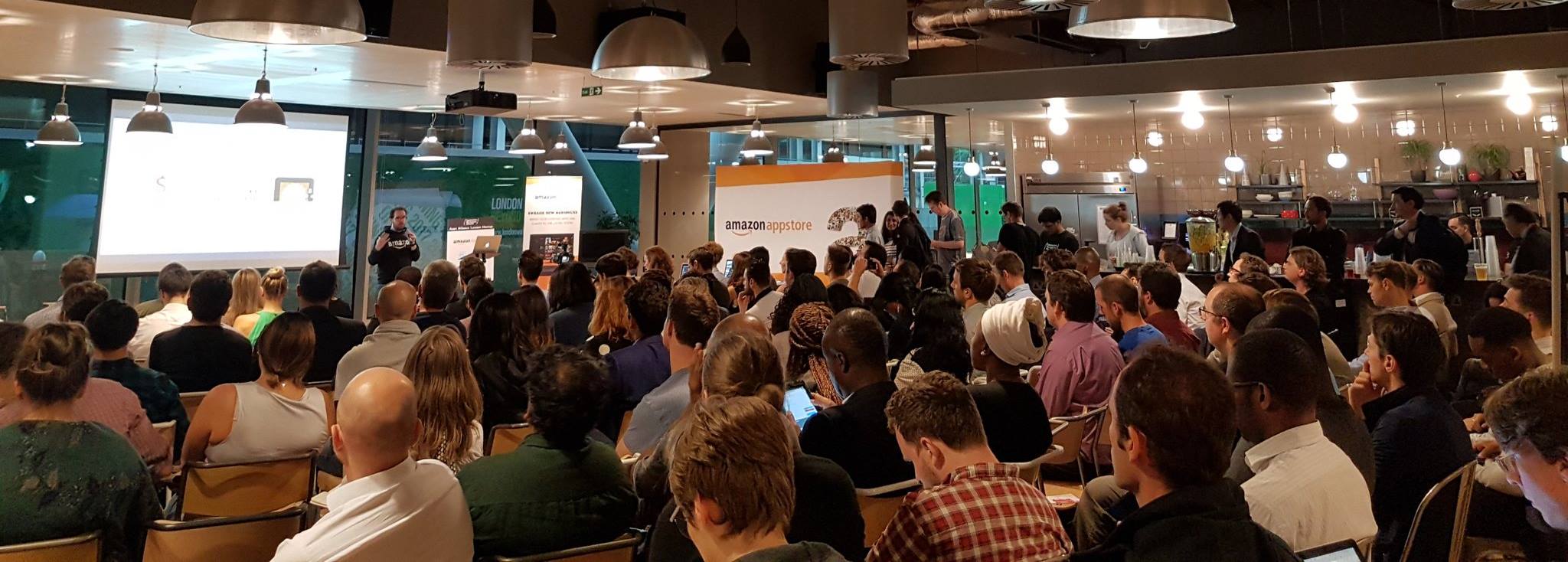On 27 July, around 100 developers and entrepreneurs from the London tech community gathered for the Apps Alliance Meetup: “Show Me the Money – Latest Tactics for Monetizing Your App”.
The meetup, which was hosted at WeWork Moorgate, was organized in partnership with Amazon Appstore and adjust and welcomed app developers, mobile tech startups and entrepreneurs to discuss key strategies for monetization, including freemium, premium, subscription, in-app purchasing, video and native advertising and the Amazon Underground business model.
The event included a presentation on the new Amazon Underground monetization model from Mario Viviani, Technology Evangelist, Amazon Appstore, and a panel that discussed different monetization models: Peak and busuu spoke about subscription, which is widely used in the EdTech industry, and game publishers Funky Panda and Jagex revealed some key strategies for the use of in-app advertising and purchases of virtual goods. The event finished with a detailed presentation on in-app purchase verification delivered by Simon Kendall, Head of Communications at adjust.
Presentation: Generate Revenue from 100% of your App Users with Amazon Underground
Mario Viviani, Technology Evangelist, Amazon
Mario Viviani, Technology Evangelist, Amazon, kicked off the event with the biggest pain point in the app industry: conversion to paying users in the freemium monetization model. According to data from the Wall Street Journal, the biggest problem with freemium app models is that 97% of consumers do not convert, but instead stick with the free features, which means that barely 3% of users pay for the apps.
As an alternative to the freemium model, Mario introduced the new monetization model: Amazon Underground, with which app publishers can monetize 100% of their Android users. With the new Amazon Underground’s monetization approach, Amazon pays publishers for every minute a customer uses the Amazon Underground app, and customers pay nothing. He gave a few examples where game publishers have generated some successful revenue. According to him, Goat Simulator had made more money on Amazon Underground in December than on any other Android platform and Gerard Piqué’s Final Kick generated over 1500% more revenue in Amazon Underground. The key to success of the Final Kick app was that they unlocked more features based on how much time users spent in the app, which utilized the principles of the Amazon Underground monetization model.
Mario also shared the three requirements for publishing apps on Amazon Underground: first of all the app should be premium or offer in-app purchases in another store; the app should have an android version; and it should be available for release in the US, UK, Germany, France, Italy or Spain. Migration of premium apps is really easy, according to him, as developers would simply set the price to zero and publish it on Amazon Underground. With freemium apps, all in-app purchases should be free.
Panel Discussion: Show Me the Money – Key Monetization Strategies in 2016
From left to right: Moderator, Bradley Want, Head of Business Development at The ASO Co, Lea Hartkopf, Head of Marketing at busuu, Jack Tang, CEO and Founder of Funky Panda, Matt Casey, Monetization Manager of Jagex and Xavier Louis, Co-founder & Chief Product Officer at Peak
Moderator, Bradley Want, Head of Business Development at The ASO Co, kicked off the panel discussion by asking what kind of monetization models are used by the app publishers on the panel.
As 95% of the apps on the stores are freemium, not surprisingly all app publishers on the panel also used a freemium (or free-to-play) model on the stores. But the way they converted users to payment was different.
The Subscription Model
Xavier Louis, Co-founder & Chief Product Officer at Peak and Lea Hartkopf, Head of Marketing at busuu used the subscription or pro features, which is widely used in the EdTech industry, to convert users into paying customers. They didn’t use any advertising, in order to keep the premium offering of their subscription or pro features model.
According to Lea Hartkopf from busuu, the biggest challenge for the subscription model is to distinguish what is free and what the users are paying for. A lot of subscription models have a different model and time period for subscription. The offering may vary based on geography too – emerging markets don’t like long subscriptions, for example. Another important rate to watch is the renewals, which are naturally very important in a subscription model.
Xavier Louis, from Peak, added that before monetisation, the most important consideration is user engagement. “Make sure you have a product that people care about and creates a long term lasting value for your users. When your users move to a pro there should be a real difference.”
The IAPs models
Matt Casey, Monetization Manager of Jagex
The game publishers Jack Tang, CEO and Founder of Funky Panda and Matt Casey, Monetization Manager of Jagex relied on in-app purchases of extended game content or virtual goods and used some native in-app advertising.
Matt Casey, Monetization Manager of Jagex shared that they ran hybrid subscription and microtransaction models. “We have recently started with purely subscription, but it wasn’t that easy to convert users, as it is very easy to come out of subscription.” Matt agreed with Xavier that the subscription model should add real value for the money.
Jagex used a large variety of virtual goods or services that extended game content to monetize their gaming apps. As a successful IAP strategy, Matt recommended to offer time-limited services and items. “We do limited edition items – if you put something on sale only for a certain time, like a weekend, or items with limited stock – then players really want to get hold of them.”
Jack Tang, CEO and Founder of Funky Panda added that you have to design your app from the start with the right IAP in order to have a successful free-to-play game. He added that you need to treat your highest paying and regular customers like VIP’s or you risk losing them. “They are the ones paying so they deserve special service, otherwise they will switch to another game.”
Monetising with Advertising
On the question of monetizing with ads, Matt Casey shared that recently Jagex has removed ads from one of their games, as after A/B testing they discovered that the life time value (LTV) and retention rate was higher for the users that were not exposed to ads and they were actually making more money that way.
Jack Tang, CEO and Founder of Funky Panda, added that he wouldn’t use banners, but video ads were working if they offered meaningful bonuses to the players – for example an extra life to play the game.
Presentation: Those Pesky Pirates – How To Verify That Purchases Are Real
Simon Kendall, Head of Communications at adjust
Simon Kendall, Head of Communications at adjust, focused on purchase verification delivery in apps. According to his data, 30% of iOS and 70% of android purchases are fake – some users find a way to pirate in-app purchases and to tamper with the transactions.
Consequences: Messing up UA and retargeting
Simon Kendall added that users faking in-app purchases weaken the information on the user community and players as they do not pay what they should be paying for. This could mess up app publishers’ revenue analysis and data, which could result in wrong retargeting to users that actually do not pay and affect user acquisition.
The Solution: Validate purchases in real time
Simon advised that doing receipts verification in real time could help app publishers to make sure all partners have the correct datasets. Some of the implementation techniques included a simple local sanity check, asynchronous yes/no responses and full synchronous server-to-server verification.
Amazing giveaway
One lucky winner got the Fujifilm Instax Mini 8 Instant Camera at the end of the event.
Congrats🎉 @reelgeex from @MiraDigitalSTO who won our instant camera giveaway last night!👏 Get snapping📸 #appstrategy pic.twitter.com/GsdlQrDy7b
— AppsAllianceEU (@AppsAllianceEU) July 28, 2016
Tag yourself on the event pictures!
Find pictures from the event on our App Alliance Facebook
Join the Meetup!
Want to know more about our London Meetup? Join the group here
Thank you to our host partners:
Thanks to our venue host:
Dobriyana Tropankeva
Communications & Events Manager EMEA












